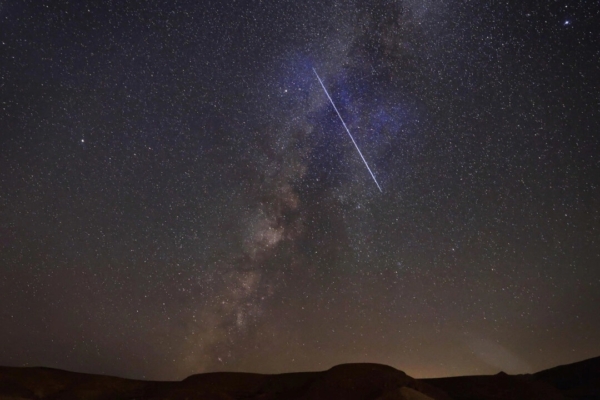On the night of the Draconid Meteor Shower in October, the sky will be enveloped in darkness with only a slender crescent moon hanging above. This annual meteor shower, known for its extraordinary meteor outbursts, is expected to illuminate the sky as thousands of meteors streak through the darkness. The Draconid Meteor Shower, also called the Giacobinids, has a history of producing spectacular displays, captivating sky watchers for years.
Experts suggest that this year’s meteor shower may not erupt into a full-fledged storm of activity. However, in the realm of meteor showers, nothing is certain. Fortunately, unlike other meteor showers that keep viewers waiting all night, the Draconids peak early in the evening as their radiant point, located in the Draco constellation, rises high in the sky, offering optimal viewing conditions.
While meteor showers are notoriously unpredictable, astronomers anticipate the Draconids to peak on the night of October 7th, Eastern Time, and continue into the early hours of October 8th. The shower is expected to be brief, spanning from October 6th to October 10th.
The name Draconid Meteor Shower invokes myth and folklore, deriving from the radiant point situated in the Draco constellation. Year after year, around early October, meteors shoot out from this same constellation, creating a celestial spectacle in the night sky.
Although not necessary, it’s intriguing to locate the Draco constellation while stargazing. Starting from the two last vertical stars of the Big Dipper, locate the North Star at the tip of the Little Dipper’s handle. Following the curve of the Dragon’s back, tracing its spine to the head, you’ll witness the glow of the “Eye of the Dragon,” comprising the Eltanin and Rastaban stars.
Watching meteor showers is often accompanied by the tradition of making a wish upon a shooting star, adding a touch of mystique to the cosmic event. The Draconid Meteor Shower is associated with a parent comet, which orbits the Sun along vast trajectories extending far beyond the solar system, taking years to complete.
Some mysteries surrounding meteor showers have been unraveled, yet many questions remain, such as predicting the next Draconid Meteor Shower. The key may lie with its parent comet, 21P/Giacobini-Zinner.
The peculiarly named Giacobini-Zinner comet was first discovered in the evening sky over France in 1900 by Michel Giacobini, and later observed in Germany by Ernst Zinner in 1913. Orbiting the Sun every 6.6 years, this comet periodically sheds debris, producing meteor showers visible from Earth. The last explosive display was witnessed in 2018.
Astrologists predict no major outbursts in 2024, but foresee the return of the Giacobini-Zinner comet in 2025, hinting at the potential for a meteor storm in the following year. Hence, it might be wise to draft a wish list for next year’s Draconid Meteor Shower, shaping up to be a grand celestial event.
Remember, when the Draconids light up the night sky, don’t forget to gaze up and make a wish, for the cosmos is a mysterious and enchanting realm.

